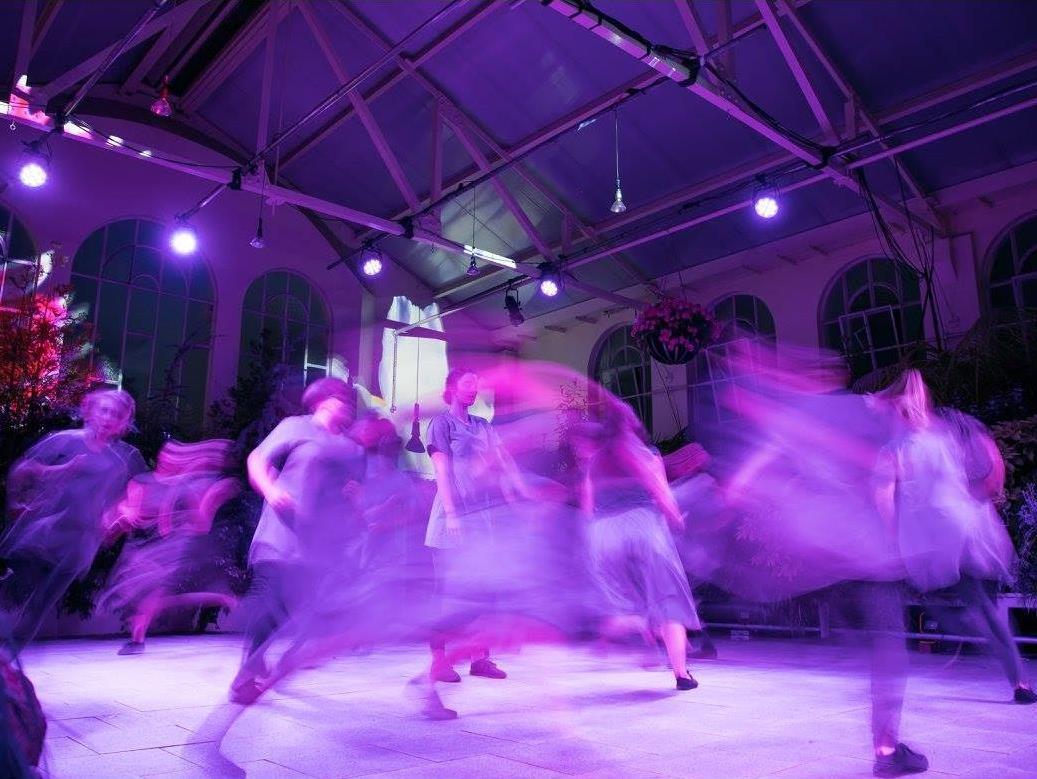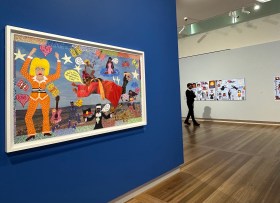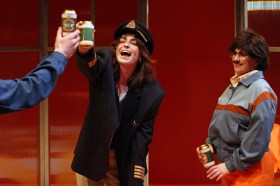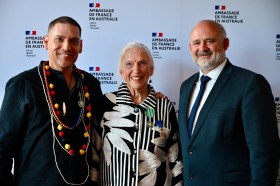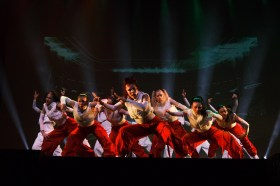The 2017 production Fully Grown by Launceston’s Stompin. Photo credit: Jasper Da Seymour Photography.
Throughout most of 2017 the Tasmanian Creative Industries Group, Creative Island, has been working with Justin O’Connor, Professor of Cultural Economy at Monash University, Dr Kim Lehman from The University of Tasmania and the Department of State Growth, to better describe the State’s cultural and creative sector – that sector defined as ‘those activities involved in the making and dissemination of goods, services and practices whose primary value lies in their meaningfulness to us – as enjoyment, transformation, education, information, challenge, dissent, and the making and celebration of individual and collective identities.’
The reasons for this work are twofold. First, posing the question directly to the sector: who are ‘we’ and what do ‘we’ contribute to the life of the state – and how sustainable is this work for the individuals, businesses and institutions who work within it? Second, how do we use this data in a meaningful and productive way with Government and partners and across the sector?
Part of Creative Island’s research program was to get a ‘dry’ quantitative baseline picture of the sector: how many people it employs, what economic value it has, where it’s located and what networks it operates within. Through work with teams at UTAS and RMIT, and based on extant data, we are able to paint a picture showing that the state’s cultural and creative sector contributes at least $216,801,463 (1.7% of Gross State Product), employs 2% of the state’s working population, and has grown 6% over the past five years. That the cultural sector sits at the heart of many other Tasmanian sectors (tourism, hospitality et al) makes it easy to estimate that with the inclusion of the allied sectors, the overall contribution to the state is over 6% of the GSP and employment is over 6% of the workforce.
This ‘dry’ data was cross-referenced to a series of qualitative focus groups and an online survey, conducted by Professor O’Connor. This attempted a snapshot of the health and sustainability of the sector, what it felt about its strengths and weaknesses in Tasmania, and how they felt they were valued by government and the wider community.
Read: Towards a greener creative Tasmania
In attempting to assess the health and sustainability of cultural producers and the wider creative ecosystem, the research sought to give full weight to the cultural value of the sector and what it contributes to the life of the state. Whilst not downplaying its important role in generating other social and economic benefits, the research sought to find a language in which its cultural contribution could be valued in itself – just as the outcomes of health, education and community development are valued on their own terms.
The cultural sector has felt increasing pressure to justify itself in terms of its economic benefit, or its contribution to specific social or event health outcomes. Whilst some of this might be a necessary corrective, there is increasing disquiet as to how it has tended to strip the cultural sector of the value it, uniquely, can bring. Those in the cultural sector often speak two languages, one full of impact and outcomes, value-added and innovation effects; the other where they try to say how vital it is in making life worth living.
This has meant that cultural policy has been increasingly framed as a consumption economy, where the job of policy (and makers, artists and producers) is to facilitate the supply of cultural goods and occasions for their purchase, often at the expense of quality – bums on seats not hearts and minds. Though the growth in tourism stimulated by festivals and the enormous success of MONA is to be welcomed, the state also needs to think about the creation of cultural content – and supporting those who produce it.
So ironically, at a time of unprecedented cultural activity, we are finding that local participants are just ‘surviving’ and see things (at a personal level) as not particularly better or worse than five years ago. This level of stasis at a time where the State currently invests more than any other in arts and cultural activity (approximately $170 per head of population compared to Victoria and New South Wales’ $70) is creating a barely sustainable sector.
While the final report by Dr O’Connor is primarily a commentary of where Tasmania is in the context of an international cultural sector conversation and less of a ‘how to fix-it guide’, there are a few key questions that the state – and the currently jostling political parties – need to ask in the formation of future policy or strategies.
Social Policy is Cultural Policy
Affordable housing, workspace, education, health care, public transport: all these are as important as grant schemes and the like. Tasmania’s economic growth is making these issues of affordability and liability (in the south at least) increasingly relevant. Similarly, the evidence suggests that cultural workers earn less – sometimes far less – than the average (and women far less than that!), and this in an economic environment that is more constrained than the mainland.
Education and Training
Tasmania’s bottom of the table performance in education is rightly identified as a serious problem. This is especially so for the cultural sector, as it concerns the kinds of education and training offered and resources and facilities present (generally supported by tertiary bodies elsewhere) to enable other activities. Similarly, there is a growing sense of disconnect between Tertiary and Vocational training bodies and the greater Cultural Sector ecology and how the public engages with it.
Growth: Not ‘one size fits all’
Increasing the prosperity, productivity (in all senses) and resilience of the cultural sector has to be a primary objective but its job is to produce culture, not to create jobs – even if we can’t have that culture without jobs.
Regionality and ‘Islandness’
The strategic significance of Hobart, and the increasing potential of Launceston and the North West of the State, are clearly recognised throughout all the research: these dispersed urban centres are what makes the economic difference to Tasmania and distinctive from the rest of Australia. Their size provides the connective intensity and a significant volume of global flows of ideas, people, money and media that unpins a range of active cultural sectors. It is essential that the connections between these hubs be maintained and strengthened, to increase capacity but maintain the diverse character of the State’s cultural sector.
Inequality and Access
However, while it is recognised that the small scale and embedded nature of the cultural sector is part of the solution to inclusive growth, minimal infrastructure for the existing cultural sector (and limited population) make the opportunity for growing diversity in the sector a very real concern, leading to noticeable deficits amongst women, first people, ethnic minorities, lower socio-economic groups and young people. Notably, 81% of the people engaged through the research program did not believe that the sector represents the diversity of Tasmanian society and that this should change.
The role of Tourism
All cultural policy needs to understand the economic and cultural dynamics of tourism, from the perspective of production and consumption. How can future policies, aiming to increase tourism to the state, equally support ‘the whole value chain’ of Tasmania as a destination, as well as an area of production and creativity?
Creative Island has invited representative of the Liberal, Labor and Greens to discuss their respective policies and agendas for the next four years at an industry policy forum, Wednesday 28 February, 1 pm at the Peacock Theatre, Salamanca Arts Centre.
Visit www.creativeisland.com.au for further details.

